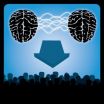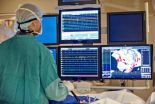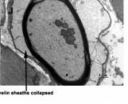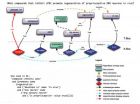(Press-News.org) Media and marketing experts have long sought a reliable method of forecasting responses from the general population to future products and messages. According to a study conducted at The City College of New York, it appears that the brain responses of just a few individuals are a remarkably strong predictor.
By analyzing the brainwaves of 16 individuals as they watched mainstream television content, researchers were able to accurately predict the preferences of large TV audiences, up to 90 % in the case of Super Bowl commercials. The findings appear in a paper entitled, "Audience Preferences Are Predicted by Temporal Reliability of Neural Processing," published July 29, 2014, in Nature Communications.
"Alternative methods, such as self-reports are fraught with problems as people conform their responses to their own values and expectations," said Dr. Jacek Dmochowski, lead author of the paper and a postdoctoral fellow at City College during the research. However, brain signals measured using electroencephalography (EEG) can, in principle, alleviate this shortcoming by providing immediate physiological responses immune to such self-biasing. "Our findings show that these immediate responses are in fact closely tied to the subsequent behavior of the general population," he added.
Dr. Lucas Parra, Herbert Kayser Professor of Biomedical Engineering in CCNY's Grove School of Engineering and the paper's senior author explained that: "When two people watch a video, their brains respond similarly – but only if the video is engaging. Popular shows and commercials draw our attention and make our brainwaves very reliable; the audience is literally 'in-sync'."
In the study, participants watched scenes from "The Walking Dead" TV show and several commercials from the 2012 and 2013 Super Bowls. EEG electrodes were placed on their heads to capture brain activity. The reliability of the recorded neural activity was then compared to audience reactions in the general population using publicly available social media data provided by the Harmony Institute and ratings from the "USA Today's" Super Bowl Ad Meter.
"Brain activity among our participants watching "The Walking Dead" predicted 40% of the associated Twitter traffic," said Professor Parra. "When brainwaves were in agreement, the number of tweets tended to increase." Brainwaves also predicted 60% of the Nielsen Ratings that measure the size of a TV audience.
The study was even more accurate (90 percent) when comparing preferences for Super Bowl ads. For instance, researchers saw very similar brainwaves from their participants as they watched a 2012 Budweiser commercial that featured a beer-fetching dog. The general public voted the ad as their second favorite that year. The study found little agreement in the brain activity among participants when watching a GoDaddy commercial featuring a kissing couple. It was among the worst rated ads in 2012.
The CCNY researchers collaborated with Dr. Matthew Bezdek and Dr. Eric Schumacher from the Georgia Institute of Technology to identify which brain regions are involved and explain the underlying mechanisms. Using functional magnetic resonance imaging (fMRI), they found evidence that brainwaves for engaging ads could be driven by activity in visual, auditory and attention brain areas.
"Interesting ads may draw our attention and cause deeper sensory processing of the content," said Dr. Bezdek, a postdoctoral researcher at Georgia Tech's School of Psychology.
Apart from applications to marketing and film, Professor Parra is investigating whether this measure of attentional draw can be used to diagnose neurological disorders such as attention deficit disorder or mild cognitive decline. Another potential application is to predict the effectiveness of online educational videos by measuring how engaging they are.
INFORMATION:
Brainwaves can predict audience reaction
2014-07-30
ELSE PRESS RELEASES FROM THIS DATE:
Brazilian researchers identify RNA that regulates cell death
2014-07-30
Researchers from the University of São Paulo (USP) have identified an RNA known as INXS that, although containing no instructions for the production of a protein, modulates the action of an important gene in the process of apoptosis, or programmed cell death.
According to Sergio Verjovski-Almeida, professor at the USP Chemistry Institute and coordinator of a research funded by São Paulo Research Foundation (FAPESP), INXS expression is generally diminished in cancer cells, and methods that are capable of stimulating the production of this non-coding RNA can be used to ...
Scientists caution against exploitation of deep ocean
2014-07-30
CORVALLIS, Ore. – The world's oceans are vast and deep, yet rapidly advancing technology and the quest for extracting resources from previously unreachable depths is beginning to put the deep seas on the cusp of peril, an international team of scientists warned this week.
In an analysis in Biogeosciences, which is published by the European Geosciences Union, the researchers outline "services" or benefits provided by the deep ocean to society. Yet using these services, now and in the future, is likely to make a significant impact on that habitat and what it ultimately ...
Ablation increases survival for adults with atrial fibrillation
2014-07-30
Ann Arbor, Mich. -- Adults who undergo a minimally invasive technique to treat atrial fibrillation are significantly less likely to die from a heart attack or heart failure, according to a long-term study by the University of Michigan Frankel Cardiovascular Center.
More than 4 million people have atrial fibrillation, an age-related heart rhythm disorder that can cause a fluttering sensation in the chest and impair the heart's ability to pump blood.
The study published in Heart Rhythm shows cardiovascular mortality dropped by 60 percent among adults who had their normal ...
Mercury's magnetic field tells scientists how its interior is different from Earth's
2014-07-30
Earth and Mercury are both rocky planets with iron cores, but Mercury's interior differs from Earth's in a way that explains why the planet has such a bizarre magnetic field, UCLA planetary physicists and colleagues report.
Measurements from NASA's Messenger spacecraft have revealed that Mercury's magnetic field is approximately three times stronger at its northern hemisphere than its southern one. In the current research, scientists led by Hao Cao, a UCLA postdoctoral scholar working in the laboratory of Christopher T. Russell, created a model to show how the dynamics ...
Differential gene expression in proximal and distal nerve segments after sciatic nerve injury
2014-07-30
Wallerian degeneration is a subject of major interest in neuroscience. A large number of genes are differentially regulated during the distinct stages of Wallerian degeneration: transcription factor activation, immune response, myelin cell differentiation and dedifferentiation. Although gene expression responses in the distal segment of the sciatic nerve after peripheral nerve injury are known, differences in gene expression between the proximal and distal segments remain unclear. Dr. Dengbing Yao and co-workers from Nantong University, China used microarrays to analyze ...
Implanting 125I seeds into rat DRG for neuropathic pain: Only neuronal microdamage occurs
2014-07-30
The use of iodine-125 (125I) in cancer treatment has been shown to relieve patients' pain. Considering dorsal root ganglia are critical for neural transmission between the peripheral and central nervous systems, Dr. Tengda Zhang and colleagues from Institute of Radiation Medicine, Chinese Academy of Medical Sciences, China assumed that 125I could be implanted into rat dorsal root ganglia (DRG) to provide relief for neuropathic pain. 125I seeds with different radioactivity (0, 14.8, 29.6 MBq) were implanted separately into the vicinity of the L5 DRG. Experimental results ...
Facilitating transparency in spinal cord injury studies using recognized information standards
2014-07-30
Progress in developing robust therapies for spinal cord injury (SCI), traumatic brain injury (TBI) and peripheral nerve injury has been slow. A great deal has been learned over the past 30 years regarding both the intrinsic factors and the environmental factors that regulate axon growth, but this large body of information has not yet resulted in clinically available therapeutics. Prof. Lemmon and his team from University of Miami in USA proposed this therapeutic bottleneck has many root causes, but a consensus is emerging that one contributing factor is a lack of standards ...
Dyscalculia: Burdened by blunders with numbers
2014-07-30
Between 3 and 6% of schoolchildren suffer from an arithmetic-related learning disability. Researchers at Ludwig-Maximilians-Universitaet (LMU) in Munich now show that these children are also more likely to exhibit deficits in reading and spelling than had been previously suspected.
Addition and subtraction, multiplication and division are the four basic operations in arithmetic. But for some children, learning these fundamental skills is particularly challenging. Studies show that they have problems grasping the concepts of number, magnitude, and quantity, and that they ...
Older adults are at risk of financial abuse
2014-07-30
Nearly one in every twenty elderly American adults is being financially exploited – often by their own family members. This burgeoning public health crisis especially affects poor and black people. It merits the scrutiny of clinicians, policy makers, researchers, and any citizen who cares about the dignity and well-being of older Americans, says Dr. Janey Peterson of Weill Cornell Medical College in the US. She led one of the largest American studies¹ ever on elder abuse, the findings of which appear in the Journal of General Internal Medicine², published by Springer.
With ...
Sugar mimics guide stem cells toward neural fate
2014-07-30
Embryonic stem cells can develop into a multitude of cells types. Researchers would like to understand how to channel that development into the specific types of mature cells that make up the organs and other structures of living organisms.
One key seems to be long chains of sugars that dangle from proteins on surfaces of cells.
Kamil Godula's group at the University of California, San Diego, has created synthetic molecules that can stand in for the natural sugars, but can be more easily manipulated to direct the process, they report in the Journal of the American ...




